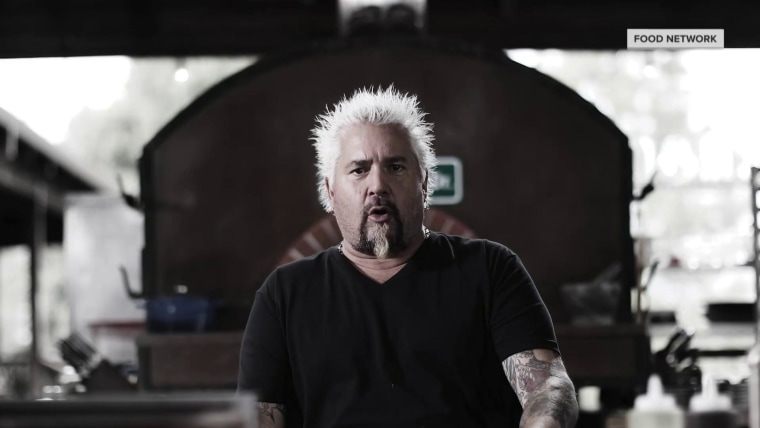2020 saw massive upheaval in how we live, work, play — and dine. The pandemic and its fallout resulted in changes in every aspect of our lives. Among the biggest shifts? How we eat.
It’s hard to even remember a time when we would just pop into a local restaurant to meet a group of friends for dinner, or throw an impromptu dinner party at home. Instead, this became the year of carryout and curbside, delivery and subscription, and above all, cooking.
Here’s a look at some of the trends that emerged out of this most bizarre of years.
1. We went back to the kitchen
With restaurants shuttered, or limited to carry-out/delivery only, and fears of the virus combined with financial havoc, consumers used to relying on food made elsewhere suddenly found themselves responsible for their own meals.
Some 41% of Americans reported cooking more, according to research from FMI, the food industry association, in their “Home Cooking in America, 2020” report. This surge seemed to tap into our inner want-to-be chefs; 35% of us found a new passion for cooking during the pandemic, according to packaged food marketing agency Acosta in their report “COVID-19: Reinventing How America Eats.” (Apparently we all wanted to be bakers, since making sourdough bread became our national pastime — and the number one most searched recipe on Google in 2020.)

Kristen Little
2. Food comforted us
Along with our new fervor for breadmaking, we sought comfort with the likes of whipped coffee, churros, cookies, and something called chaffles (aka cheese waffles). The word healthy only appeared in one of Google’s top 10 recipe searches (and that one, healthy banana bread, clocked in last!). However, we weren’t all carb-loading. Younger adults reported that their eating habits actually became healthier under the COVID-19 pandemic, according to FMI.
3. We got more creative
Fewer trips to the store meant consumers had to get creative with both pantry and freezer items, Michelle Day, Consumer Insights Senior Manager at GE Appliances, told TODAY Food. Earlier in the pandemic that meant experimenting with more time-consuming and complicated recipes (see: sourdough above). But as cooking fatigue set in we started looking for shortcuts.
“By October, 54% of consumers were using their creativity to speed up the cooking process, such as buying more ready-to-cook items, prepping meals in advance, and using the microwave, air fryers, or pressure cookers more often,” said Day. Throughout the year about a third of consumers have been trying new recipes as a way of changing up at home meals, she said.
4. Our culinary worlds got smaller, but also? The world came to us
When we stopped traveling we lost our ability to explore the world’s foods firsthand. Meanwhile though, we were able to bring the world to our door. Zoom cookalongs with friends across the country and globe or via platforms like Goldbelly — which brought celebrity chef and celebrated restaurants’ fare like Chicago’s Girl and the Goat and Savannah’s The Grey to our kitchens — introduced us to new cuisines, or let us revisit favorites.
Restaurants and food purveyors launched subscriptions. Sam Bernstein, founder of Table22, saw an explosion of interest in curated boxes like the Cookbook Experience from Detroit favorite Takoi. The delivery subscription gets a meal kit and recipes from chef Brad Greenhill’s new, unreleased cookbook into fans’ hands each month.
Other restaurants added pantry provision shopping options to their line-up, with restaurants like Bar Vetti in Louisville making cult favorites like their Caesar salad dressing available for at home experiences.
5. We went outside
We brought back picnics in 2020. Gatherings at home, when we did them in between rolling lockdowns, centered on eating outside. And restaurants launched a massive effort to serve diners al fresco — on patios, on sidewalks, in the street. This move outside isn’t poised to end with the rollout of vaccinations, either, according to Branden McRill, a restaurateur who owns Fine-Drawn Hospitality, a restaurant group in Philadelphia.
“All new restaurants, as far as I’m concerned, effective immediately … should be half indoor, half outdoors,” he said. “What we’re gonna see with restaurants is massive outdoor areas that are covered.”
6. In-car dining — not just for fast food anymore
Drive-in movies were among the comebacks of 2020, and with them, car picnics. Drive-thrus surged too, and this trend will also continue, predicts McRill. And we won’t have to wait in lines snaking around the block. “You’re gonna see drive-thrus popping up with four, five, six, seven, eight drive-through windows and stores that are pickup only with no indoor operation,” he said. We’ll order from an app and pick up our food without ever setting foot inside thanks to the massive uptick in ghost kitchens.
7. We fired up our phones
A move to technology was one of the biggest themes of eating in 2020, McRill said, as we turned to our phones first to see what there is to eat, where and how. Restaurants that could afford custom app development went that route in order to save on delivery app fees, he said. Menus went the way of the Yellow Pages as we learned to scan QR codes to see restaurant menus. (Remember when we all tried so hard to not use our phones at the table?) We also tapped and clicked our way to grocery order and delivery or pick-up.
8. We honored our social contracts
2020 showed us that our dining dollars can be acts of love for local, independent businesses. “It’s a bit of a near death experience,” said Bernstein, “ … straight up looking around and seeing your favorite places closing or coming really close … wakes people up to like, ‘hey, I’m here to be more than a transactional consumer. If I believe that this business is an important part of my community I have a role to play in ensuring the viability of business through my patronage.’”
“You’re engaging in a social contract,” he said. “While the act of hitting ‘subscribe’ to buy some food every month from your favorite restaurant seems like not a huge action it’s actually a really meaningful act to make a commitment that you’re going to show up for them every month and I think that’s just a really powerful thing.”
9. We got options. So many options.
At first blush it may not seem like 2020 was a year of options. But in fact, optionality is probably the word of the year when it came to restaurants, said McRill. Were they the options we might have chosen? Not necessarily. But, forced to innovate, restaurants came up with as many ways as they could dream up to get diners in (or get their food in their hands). I saw busy parents rejoice at the ability to pick up dinner curb-side — parent or not, I don’t think any of us want to see that go away! It won’t, said McRill.
“Restaurants are going to be offering more delivery, more meal kits, more pick up, more take-out, more in-home experiences, more catering, more video demonstrations, more everything,” he said. “The guest is going to get more optionality, and a lot of these things are going to stick around because people have figured out, not only how to do them but how to do them when their back’s up against the wall with very limited resources, so think about what happens when the revenue starts to return and the resources start to return.”
Just wait, he said. “September 2021 to September 2022 is going to be the most innovative time period in the history of restaurants we’ve ever seen in our lifetime. Without question.”






More Stories
Dated Kitchen Features That Homebuyers Notice
Shake the fridge Shakshuka using up leftovers
Italian Meatloaf – Once Upon a Chef